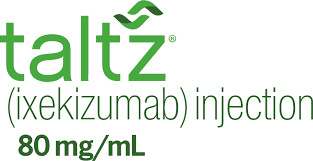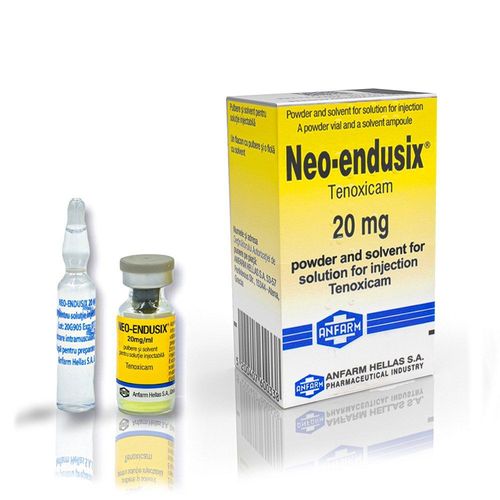This is an automatically translated article.
Meloflam belongs to the group of non-steroidal anti-inflammatory drugs and is available in the form of tablets. The main ingredient of Meloflam is Meloxicam, which is indicated in the treatment of acute exacerbations of osteoarthritis. However, Meloflam can cause some side effects while using such as headache, constipation, nausea and vomiting... Therefore, patients need to learn carefully before using Meloflam medicine. .
1. The mechanism of action of the drug Meloflam
Meloflam 5mg has the main ingredient Meloxicam, which belongs to the group of non-steroidal anti-inflammatory drugs of the Oxicam group with anti-inflammatory, analgesic, and antipyretic properties. The anti-inflammatory activity of this compound was demonstrated in a conventional experimental inflammatory model. However, the mechanism of action of this compound still needs to be further elucidated. Despite this, the non-steroidal anti-inflammatory drug Meloflam is thought to share a common mechanism of action by inhibiting the biosynthesis of prostaglandins, which are mediators of inflammation.2. Indications and contraindications for the use of Meloflam
Meloflam is indicated in the symptomatic treatment of acute exacerbation of osteoarthritis or symptomatic treatment of rheumatoid arthritis and ankylosing spondylitis.However, Meloflam is also contraindicated in cases of hypersensitivity to the components of the drug, cross allergy to acetylsalicylic acid, severe heart failure, peptic ulcer, severe liver and kidney failure, history of vascular bleeding brain or bleeding disorder...
3. Dosage and how to use Meloflam
Meloflam is used in different doses according to the age and severity of the disease.
Treatment of acute exacerbation of osteoarthritis is to use Meloflam at a dose of 7.5mg/day and may increase the dose to a maximum of 15mg/day.
Treatment of rheumatoid arthritis using Meloflam at a dose of 15mg/day and depending on the individual response, the dose can be reduced to 7.5mg/day
Treatment of ankylosing spondylitis using Meloflam at a dose 15mg/day and depending on individual response the dose may be reduced to 7.5mg/day
In patients with severe renal impairment the dose of Meloflam should not exceed 7.4mg/day.
Note: The recommended dose of Meloflam is for reference only. Therefore, before using Meloflam, patients need to follow the doctor's instructions.
4. Management of missed dose and overdose of Meloflam
If you forget a dose of Meloflam, use it as soon as you remember. However, if the interval between the missed dose of Meloflam and the next dose is too close, skip the missed dose. Patients should not double the dose of Meloflam, because it can cause an overdose. To overcome the situation of missing a dose of Meloflam, patients can set an alarm or ask a loved one to remind them.
In case of accidentally using Meloflam drug overdose than prescribed and appear some unwanted signs, need to seek emergency care immediately.
5. Side effects when using Meloflam
Meloflam can cause some unwanted side effects during treatment. However, with each case, the side effects of Meloflam can vary in severity from mild to severe.
Some common side effects caused by Meloflam include: Abdominal pain, stomach pain, bloating, flatulence, diarrhea,... These side effects may occur at the start of treatment or after when increasing the dose of Meloflam. Usually, side effects from Meloflam can be transient or subside over time.
However, in some cases Meloflam can cause serious unwanted side effects with rare reactions. These reactions may appear within minutes of using Meloflam or longer within a few days. In the presence of serious side effects such as: allergic reactions, anemia, dizziness, hypertension, gastritis, liver dysfunction, edema, rash, hyperkalemia, changes in systemic edema mood, leukopenia, thrombocytopenia... the patient should stop using Meloflam and seek medical help immediately.
Some notes during the use of Meloflam:
For pregnant and lactating women, caution should be exercised when using Meloflam. Patients should be advised to use Meloflam from their doctor, and carefully analyze the benefits and risks before using the drug. Meloflam may change how it works as well as increase its side effects. Therefore, to avoid drug interactions with Meloflam, the patient should provide the doctor with a list of previously used drugs, including prescription and over-the-counter medicines, herbs,... When using Meloflam, it is important to save Watch for signs of an allergic reaction to the drug. Patients should report their reactions to their doctor so that they can be treated promptly. Meloflam can cause dizziness and headaches in patients. Therefore, people who operate machinery or drive vehicles should pay attention when using the drug to ensure safety. Meloflam should not be used for persistent intracranial bleeding. Meloflam increases the effect of Levodopa and should be avoided with Meclophenoxate and Centrofenoxine. Avoid concomitant use of Meloflam with other non-steroidal anti-inflammatory drugs. Because Meloflam is not suitable for the treatment of patients requiring acute pain relief. Patients with a history of esophagitis, gastritis, peptic ulcer disease need to consider treatment before starting Meloflam. Above is all information about Meloflam, patients need to carefully read the instructions for use, consult a doctor / pharmacist before using. Note, Meloflam is a prescription drug, so patients should absolutely not buy drugs to treat at home because they may encounter unwanted side effects.













